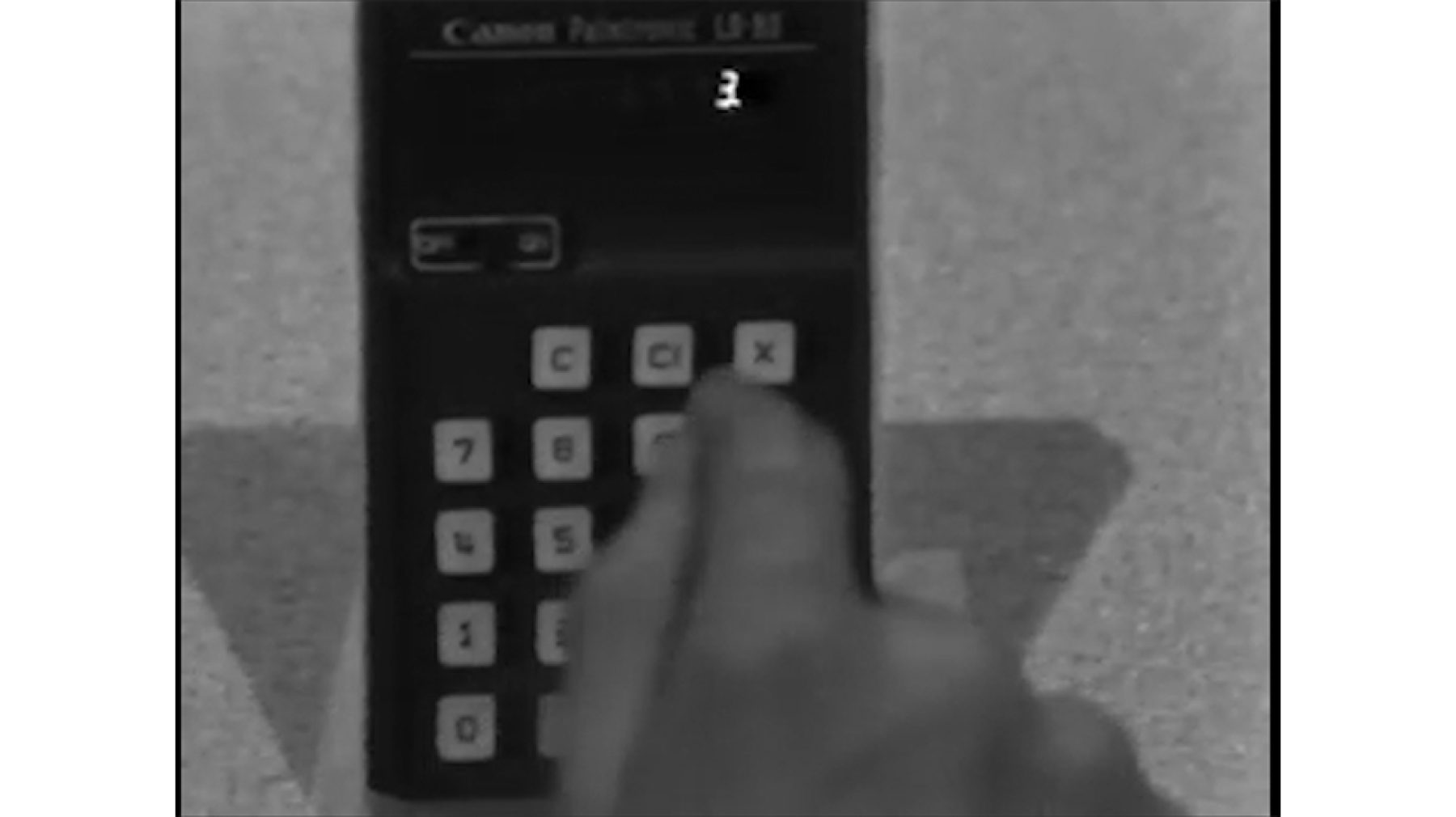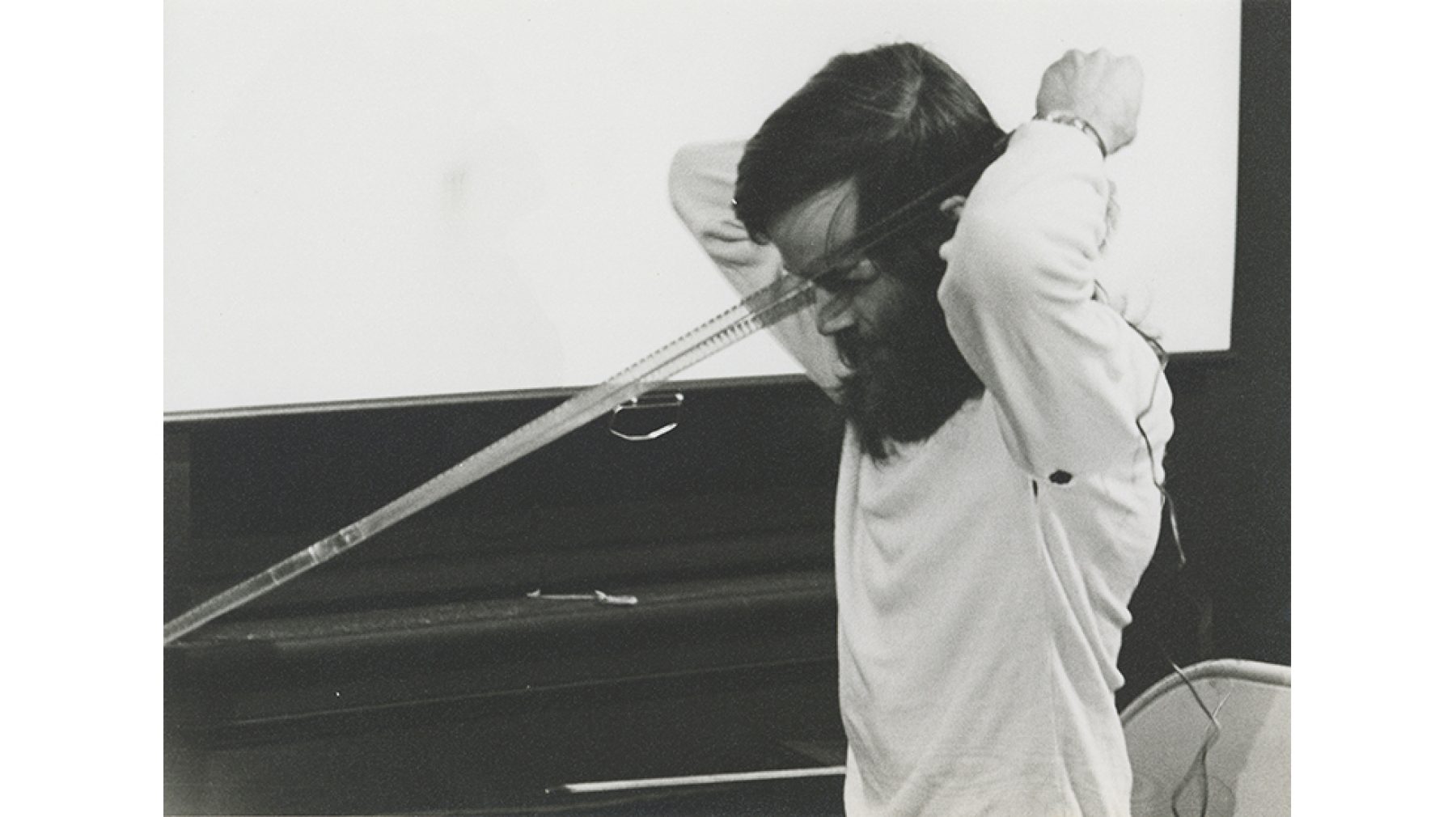This program happened on December 1, 2018.
Tony Conrad Video Work

Still from Cycles of 3s and 7s, Tony Conrad, 1977. Courtesy Tony Conrad Archives and Greene Naftali, New York. Image courtesy Tony Conrad Archives. Work © The Estate of Tony Conrad
Cycles of 3s and 7s
1977, video transferred to digital, b/w, 12 min. excerpt of 23 min. original
Conrad’s first video work, Cycles of 3s and 7s, resembles much video art of the 1970s: recorded in a single take, the grainy footage documents the artist performing a repetitive action for the camera in his studio. Conrad was a math major in college and former computer programmer, and here he punches calculations into a handheld calculator, assuming the demeanor of a friendly math teacher (a role he would reprise in the cable program Homework Helpline (1994–95), also on view in this exhibition). However, the video is as much about music as it is about math, building on Conrad’s lifelong rejection of traditional methods of composition. By repeating the numbers three and seven, he creates ratios associated with non-Western music, and as Conrad himself noted, the sound of his voice narrating the calculation of these ratios takes on a rhythmic quality, creating a kind of computer-generated song.
In addition to being a video about music, Cycles of 3s and 7s is also a video about computers. As Conrad later explained, although the digital hand-held calculator was a fairly new consumer product, it was nonetheless an accessible machine, something even a child could operate. By deliberately using a familiar technology, Conrad hoped to question the “fetishization” of computers by some media artists: “I was at such a point of skepticism [about the uses of computers in art] that I felt that it would be interesting to do computer art using a computer much simpler than the kinds of computers that were being fetishized at the time, because the tendency at that point in terms of techno-culture was for the artist to access the most lavishly endowed computer possible … It was an almost erotically driven fantasy of control and sophistication, which I wanted to debunk.” –from Introducing Tony Conrad: A Retrospective, Albright-Knox Art Gallery
Loose Connection
1972-2011, film/video transferred to digital, 54 min, 54 sec
To make Loose Connection, Conrad built a camera that moved in two directions simultaneously: it could be rolled backward and forward on a waist-high rig made with baby carriage wheels, and it automatically rotated 360 degrees. Conrad recorded the sound continuously, but he set up the camera to only shoot several frames at regularly spaced intervals as it turned. This innovative apparatus was put to use only once, in a continuous shoot that followed Conrad and his family from their home in midtown Manhattan to the local A&P. Largely because Conrad did not have the money to finish the project, the collection of exposed rolls of 8mm film remained in storage for thirty-eight years. When he finally developed the film and transferred it to digital video in 2011, he was able to realize the project as planned: a jittery, flickering version of gritty, even intense everyday reality in New York City where the illusion of motion that film normally creates is shattered and sound and image remain only loosely connected. – from Introducing Tony Conrad: A Retrospective, Albright-Knox Art Gallery
In collaboration with Harvard Film Archive.
Archive
Explore more of our rich history through our archive.
